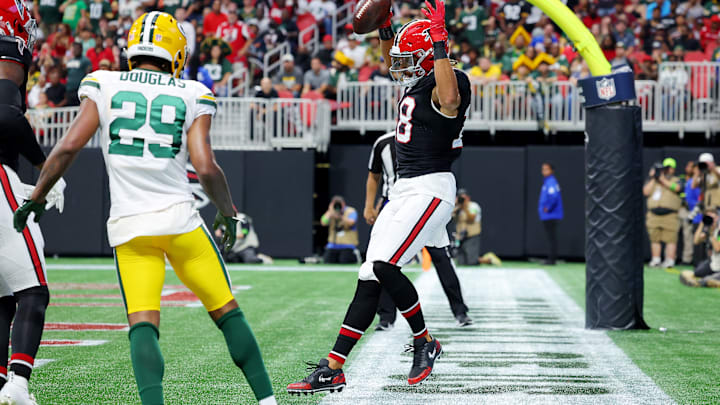The Atlanta Falcons had a fantastic touchdown wiped off the board thanks to replay. With just under five minutes left in the third quarter, Desmond Ridder rolled right and threw a perfect pass to Mack Hollins who secured the ball and tapped his toes before falling backwards out of bounds. The officials signaled it a touchdown on the field.
However, apparently, they saw enough on replay to overturn the call thanks to a head-scratching rule (which doesn't even highlight the fact that there was not enough evidence on replay to overturn the call on the field).
NFL wipes away Atlanta Falcons touchdown after saying Mack Hollins had both toes in
Tell me if that header right above makes sense... It doesn't. Walt Anderson, the Senior VP of officiating, cleared up the reasoning for why the Atlanta Falcons had a touchdown wiped off the board after review.
Their reasoning was that Mack Hollins had two toes in bounds and control of the ball. Sounds like a catch, right? Apparently not because if your toes don't move and your heel comes down out of bounds, it is not a catch.
Explanation on the Mack Hollins no-catch from NFL Senior VP of Officiating Walt Anderson: “Had he been able to drag his toe some distance and then you end up stepping then you get the benefit of the drag, but when it’s all in one step, one motion, then it’s part of the foot.” pic.twitter.com/FC771srTei
— Kelly Price (@thekellyprice) September 17, 2023
I think there are a lot of things wrong with that rule. If your toes are down for any period of time and then your heel hits out of bounds, it should be a catch.
Why does dragging your toes matter? Why is it not okay for your heel to touch after but okay for anything else to touch after? It just leaves a lot of inconsistencies.
It really brings in more problems than if you were to just say that your toes have to tap in bounds with possession of the football.
Even though this clarified some of the reasoning for them overturning the call on the field, it still does not explain why they believed they had enough evidence to overturn the call. Zooming in to where you are trying to distinguish twenty pixels on the screen should not be enough to overturn the call on the field.
I also don't feel like this rule has been implemented with consistency in the past.
